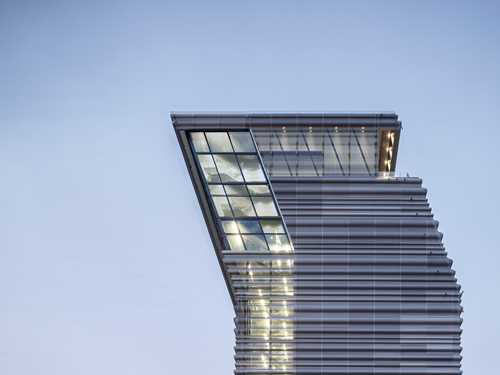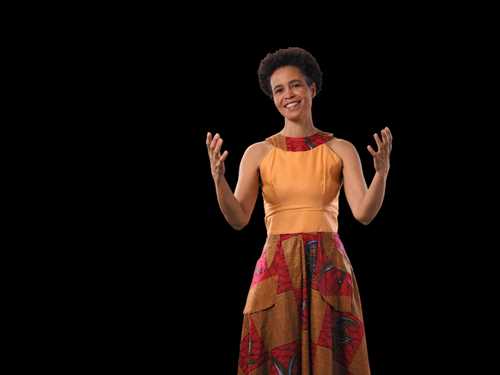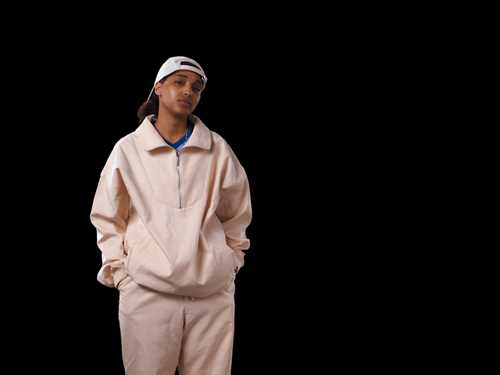Meet the artists
Roza and Ronak Moshtaghi have created Sofie’s Room, an immersive installation for children, where darkness becomes a source of magic, mystery and creativity.
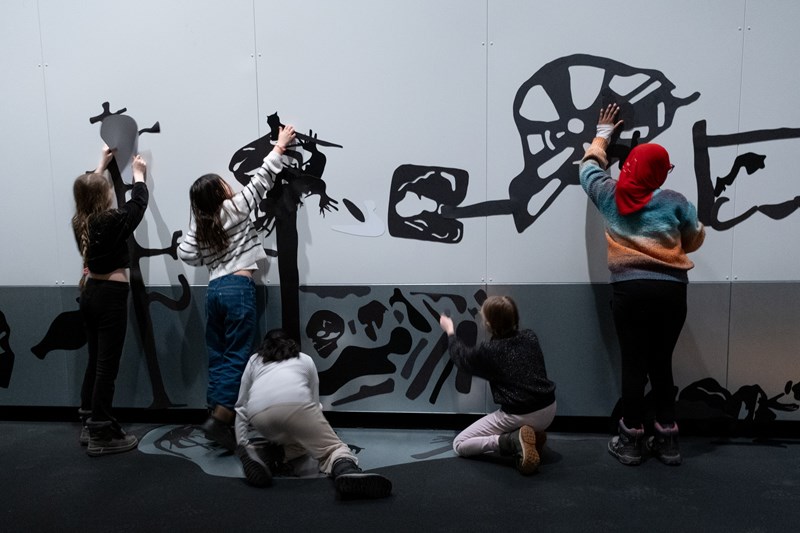
Photo: Åsne Margrethe Kleiv © Munchmuseet
The Moshtaghi sisters were born in Teheran, but today Roza (born 1985) lives in Oslo and Ronak (born 1987) lives in Oslo and Berlin. Roza is a choreographer whose interests include audiences’ interactions with spaces and architecture. Interaction is also an important theme for Ronak, a visual artist, and the sisters regularly collaborate on projects.
‘Despite our similarities, our work is rooted in different ways of thinking and different working methods. It’s satisfying and challenging at the same time. Being sisters gives our conversations a layer of honesty that wouldn’t be easy to achieve otherwise,’ says Roza.
When the sisters started work on Sofie’s Room, which will be open on Floor 10 of MUNCH from 22 March to 8 August 2024, one thing in Ronak’s mind was the most precious moments she spends with her child.
‘For me, it’s when we have enough time to go together to a place that’s new to us both, without knowing where the day will end. It might be a forest, a building or a shopping mall, but the most important thing is that we experience things together, that we figure out together where we’ll go and what we’ll do. That’s the experience we wanted to recreate with Sofie’s Room.’
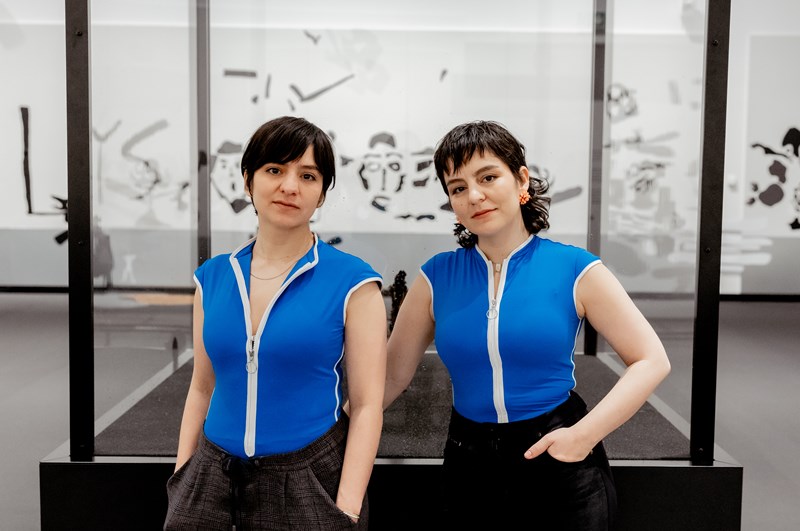
Ronak og Rosa Moshtagi in the exhibition they have co-created. Photo: Tale Hendnes
Legacies, ghosts and shadows
The result is a mysterious monochrome landscape that will change throughout the five months of the exhibition, as visitors explore and transform the installation. The room’s walls are magnetic and are covered with black shapes, some inspired by Edvard Munch. When visitors move the shapes around on the wall, the shapes morph into new images, sequences and patterns. At the centre of the room, a black liquid gushes out of a glassed-in black fountain.
‘We think of the fountain as an imaginary place, a place where the legacy of the past is passed on to the future. This is a place that can be overwhelming, consoling, scary or emotional,’ says Ronak.
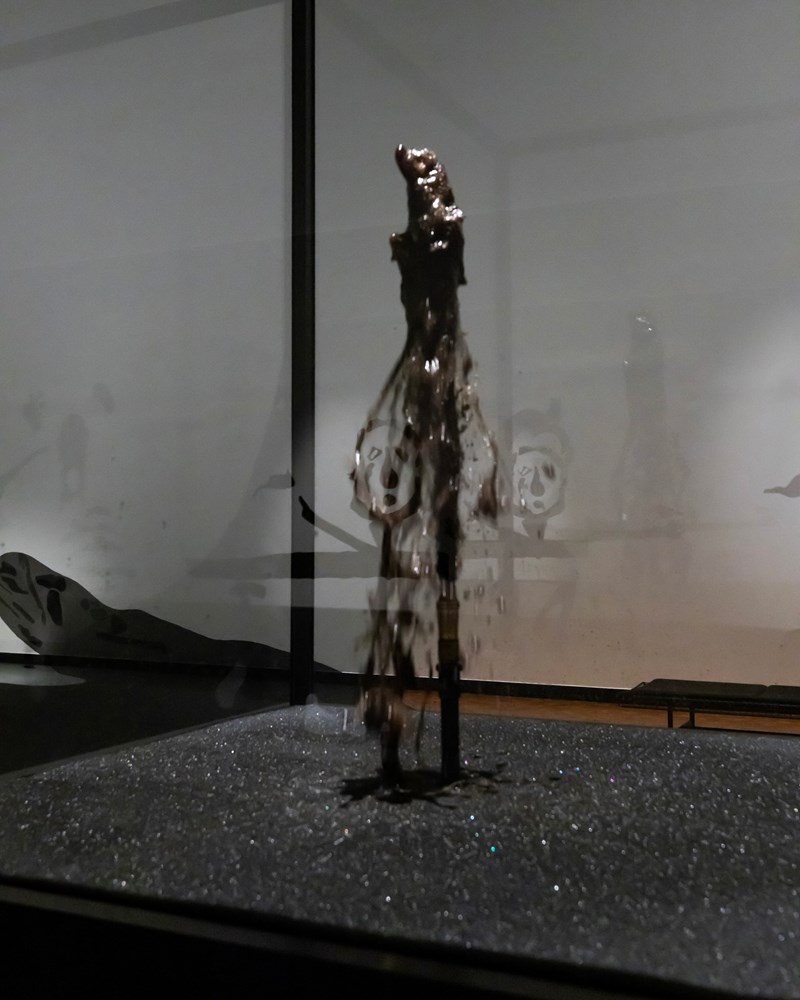
Photo: Ove Kvavik © Munchmuseet
Ronak herself still remembers the moment during her childhood when she realized that she was simply a continuation of something that had started long before she was born:
‘The realization that we don’t start from nothing, but that we all carry debts and legacies on our shoulders, can be beautiful, but also rather intense. In the context of nationalism, the past is always presented as something glorious, something to admire and be proud of. The concept of a museum is often linked to such ideas. With the fountain, we wanted to create a more abstract and ambiguous representation of legacy, in which it is difficult to know whether it’s something that’s “good” or “bad”,’ says Ronak.
As an artist, Roza is fascinated by everyday objects and the stories they tell and/or carry within them. Familiar objects can be comforting for visitors, says Roza:
‘It gives them an opportunity not to worry how much they “understand” what they’re looking at.’
The fountain is just such an object. In many ways, it resembles the fountains you’ve seen before, in parks or city plazas, but the black liquid it emits creates a sense of otherness, mystery and unreality.
Ronak adds that ‘the black fountain also reminds us of an oil well that has covered the room with thousands of barrels of oil. Oil wells have been a symbol of new-won wealth, but they also function as portals linking us to Earth’s deeper strata, the realm of phantoms and shadows. Oil represents a legacy, it’s an ancient material that carries traditions and stories within it. But the precise nature of the fountain is something for visitors to interpret!’
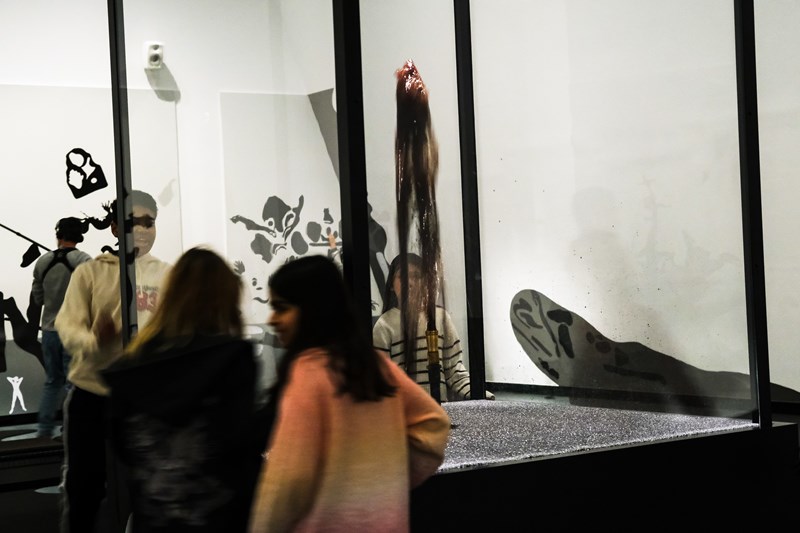
Photo: Åsne Margrethe Kleiv © Munchmuseet
Without beginning or end
Many people expect cultural experiences intended for children to be brightly coloured and cheerful. In Sofie’s Room, darkness and phantoms play an important role, as does the past. I also know that you were inspired by Det syke barn / The Sick Child, Munch’s painting of his sister Sophie as she was dying of tuberculosis. Can you also tell us a little about why you chose this painting?
‘I often work in theatres and I’m always inspired by observing people as they enter the “black box”. For me, that’s the precise moment when the performance begins! Our black-and-white room is intended to draw attention to the colourful world our children inhabit,’ says Roza.
Ronak continues:
‘We both became fascinated by Det syke barn / The Sick Child and the dark-red room where the painting is displayed in the museum. We think the painting is so beautiful, but we found it emotionally difficult to be inside that room. So then we had this idea about how you can talk with children about the angst in that room: what artistic language can you use to talk about that heavy burden?
‘In today’s situation, we’ve found it a big challenge to work on children’s exhibitions,’ says Ronak.
‘Living with the fact that we are benefiting from a system that is realizing high-quality art experiences for children in one part of the world, and that is silent about children being killed and starved to death in another part of the world, is very difficult. It takes a lot to continue as normal.’
A room in a constant state of change
For Roza, who has experience with dance and performance, it was both exciting and challenging to find out how they could keep an interactive work going for five months, for the whole time that the exhibition is open. They found their solution in their audience: in Sofie’s Room, it is the audience’s presence in and interactions with the space that will continually regenerate the experience.
‘We were also interested in how visitors will play the role of curator. It is the visitors who will make collective decisions as to how long a collage gets to stay on the wall and/or if they want to make a new collage.’
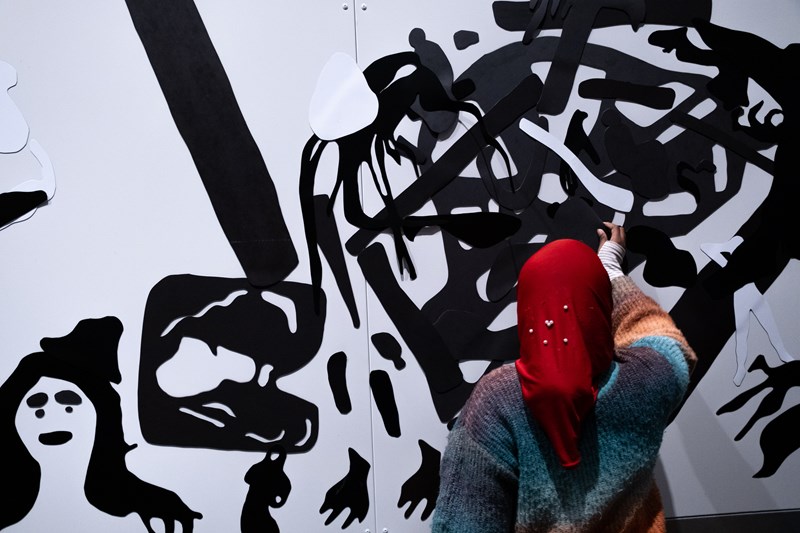
Photo: Åsne Margrethe Kleiv © Munchmuseet
The actual design of the museum building was also an important source of inspiration for Roza’s and Ronak’s work on the exhibition and the landscape they wanted to create. They asked questions such as: What were the basic ideas that shaped the museum’s design? How do the architecture, the interior and the other design elements help guide people through the musuem?
‘The exhibition space follows the same logic as the rest of the museum’s design and architecture,’ explains Ronak.
For example, the enclosed fountain might remind us how art in a museum is framed and revered. There’s also an animated movie that’s been made for the exhibition, in which we meet a character called Sofie, who explores the museum.
‘Sofie is just as inquisitive about the long escalator and the museum building as she is about Edvard Munch’s paintings. In other words, she can’t separate her experience of “art” from her experience of riding on an escalator. She uses the place just as she likes – even the paintings change when she looks at them. Like every child, she transforms spaces with her presence, and the museum is no longer the same place when she leaves it,’ says Ronak.
Nothing is experienced alone
What kinds of thoughts did you have about working with children as your target audience? Had either of you worked on art experiences for children before?
‘Childhood, playfulness, archive and interactivity have been important elements in my previous projects, but Sofie’s Room is the first time I’ve created an art exhibition specifically for children,’ says Ronak.
‘Children have their own internal narratives and understandings, or misunderstandings, of things. It’s a little like creating art for a future that’s beyond my grasp! Even so, I think that they will understand that we tried to make contact with them, and that’s already the start of a dialogue.
Roza explains that her first experience of making art specifically for children was in 2021, when she choreographed a work for toddlers.
‘During the creative process I always had it in mind that the toddlers wouldn’t attend the performance alone, and this is also true of Sofie’s Room. I believe that we mainly experience things through each other’s eyes. In that way, nothing is experienced alone or in isolation,’ says Roza.
‘Our aim was rather to create an inclusive exhibition based on a child’s way of thinking. A playful room that encourages children to interact with each other’s creative output and bring the museum to life.’
Interview: Hanna Hille Stoltenberg / MUNCH, published 22.03.2024
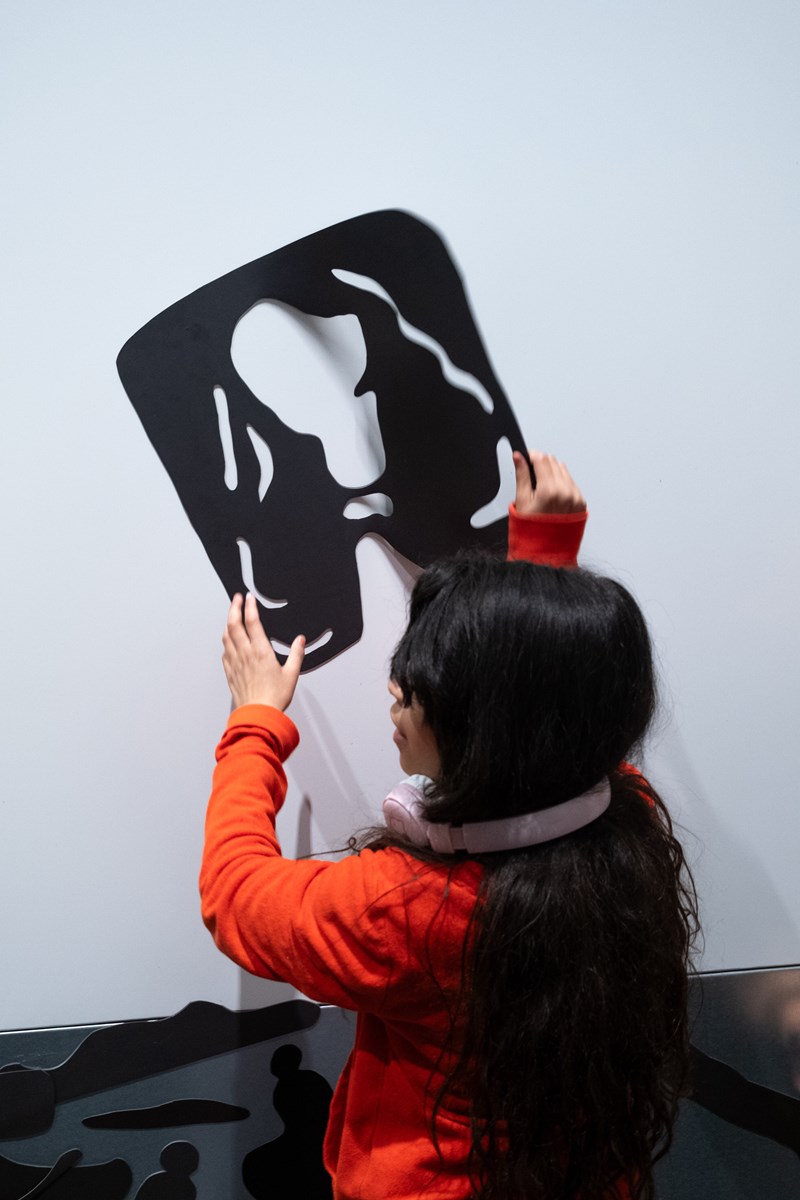
Photo: Åsne Margrethe Kleiv © Munchmuseet
